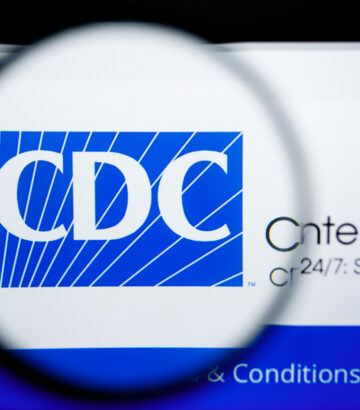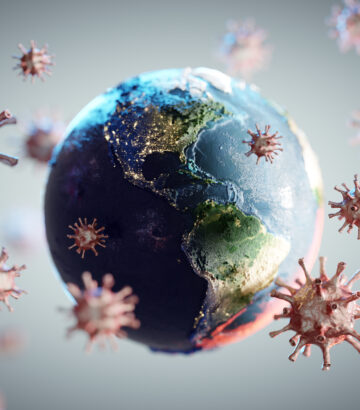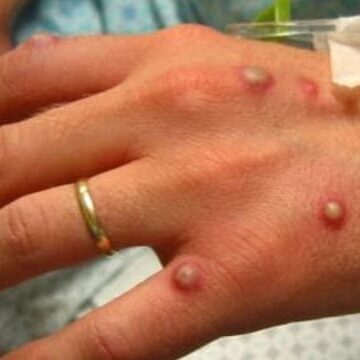Global Considerations for H5N1: Risks and Preparedness
Authors: Europe-A-Patient and World Health Network
Executive Summary
We provide a detailed overview of the evolving risks posed by H5N1 avian influenza and recommendations for proactive measures to safeguard countries around the world. Here is a summary followed by a detailed analysis.
- Dairy and Poultry Industry Risks:
- Recent outbreaks in U.S. dairy herds have caused severe losses, including 15% fatalities in cows and significant reductions in milk production.
- Serological testing revealed widespread undetected human infections among farm workers. Preventing these risks from reaching countries worldwide requires enhanced import surveillance, stricter trade protocols, and expanded farm monitoring.
- Wild Bird Migration and Global Trade Risks:
- Migratory birds and global livestock trade represent dual risks for H5N1 introduction. Coordinated monitoring and control measures are critical to mitigate these threats.
- Severity and Potential for Human-to-Human Transmission:
- Recent U.S. human cases of H5N1 have been mild overall, but historical data shows a 50% fatality rate in severe cases.
- Two severe recent cases, one in Canada (requiring ventilator and ECMO treatment) and one in the U.S. (resulting in death), highlight the potential for H5N1 to cause severe disease in humans.
- Both cases involved mutations in the HA influenza protein, enabling binding to sialic acid receptors in the lungs and brain. This mutation aligns with predictions of increased severity and the potential for human-to-human transmission. Preparations must assume high severity and the likelihood of transmission in such cases.
- Pandemic Preparedness Beyond Planning:
- The COVID-19 pandemic exposed gaps between planning and actionable capacity. Investments in cross-government collaboration, community organizations, emergency services, and military organizations are essential for future pandemic preparedness.
Detailed Analysis: H5N1 Risks and Preparedness
1. Dairy Industry Infections and Preventing U.S. Introductions
Recent H5N1 outbreaks in the United States, particularly in dairy herds, highlight significant zoonotic spillover risks. In California, an emergency order was issued after infections were detected in over 50% of herds, resulting in 15% fatalities among cows and substantial milk production losses—far exceeding previously observed impacts across the country.
Serological testing revealed that 7% of farm workers in infected herds had contracted the virus, implying thousands of undetected human cases among farm workers nationwide. These findings underscore the potential for the virus to spread silently among at-risk populations. Preventing such infections from reaching countries worldwide will require:
- Enhanced Import Surveillance: Strengthening detection and control mechanisms for animal products and livestock imports from affected regions.
- Trade Protocols: Enforcing stringent biosecurity measures, including potential temporary restrictions, to reduce the risk of introducing the virus.
- Farm Monitoring: Expanding veterinary surveillance in dairy facilities to detect infections early and limit their spread.
2. Current Risks for Poultry Industry Workers
The ongoing evolution of the H5N1 virus increases the likelihood of human infection, particularly among high-exposure groups such as poultry workers. Finland has already taken proactive measures by vaccinating at-risk farm workers. Countries worldwide should adopt similar preparedness strategies to reduce exposure and mitigate risk. Recommended measures include:
- Vaccination Programs: Stockpiling H5N1 vaccines and prioritizing high-risk populations, such as farm workers and veterinary staff, for immunization.
- Protective Measures: Mandating the use of personal protective equipment (PPE) and implementing regular health screenings for poultry industry workers.
- Surveillance Networks: Expanding genetic monitoring programs in poultry farms to track viral mutations, particularly those associated with increased transmissibility or severity.
3. Severity and the Potential for Human-to-Human Transmission
While most U.S. human cases of H5N1 this year have been mild, two severe cases highlight the virus’s potential for significant morbidity and mortality. Historically, H5N1 has demonstrated a 50% fatality rate in severe cases. The contrast between current mild cases and historical severity likely reflects the virus’s current inability to efficiently bind to human respiratory receptors.
The two recent severe cases—one in Canada (requiring ventilator and ECMO treatment) and one in the U.S. (resulting in death)—involved mutations in the HA influenza protein. These mutations are linked to increased binding to sialic acid receptors, which are present in both the lungs and brain, consistent with predictions that such changes could dramatically increase severity. Binding with cells in the lungs is also key to enabling human-to-human airborne transmission.
Additional findings in mammals, such as cats and dolphins, underscore the virus’s potential for severe neurological involvement. High viral loads in the brain have been associated with lethal infections in these animals, consistent with the presence of sialic acid receptors there. These observations emphasize the urgent need to prepare for a scenario involving both severe disease and efficient human-to-human transmission.
4. Two Distinct Risks: Wild Birds and Global Trade in Farm Animals
Countries worldwide face two primary risks for H5N1 introduction:
- Wild Bird Migration: Migratory birds are key vectors for the spread of H5N1 globally. As the virus continues to evolve within wild bird populations, countries worldwide remain vulnerable to introduction along established migration routes. Enhanced monitoring and early detection of H5N1 in wild birds are critical to mitigating this risk.
- Global Trade in Farm Animals: H5N1’s transmission through farm animals involved in international trade represents a second significant risk. Outbreaks in U.S. dairy herds, such as those in California, demonstrate the virus’s capacity for widespread harm, including high fatalities and reduced livestock production.
To address these risks, countries worldwide must:
- Coordinate efforts to monitor and control wildlife and livestock health.
- Enhance biosecurity protocols in livestock trade.
- Collaborate globally to trace and contain outbreaks.
5. Preparing for Future Pandemics: Beyond Planning to Operational Capacity
The COVID-19 pandemic exposed significant gaps between planning and actionable response capacity. Addressing these gaps is essential, given the increasing emergence of new diseases. Recommendations include:
- Building Operational Capacity: Invest in tangible systems for rapid pandemic response, including cross-government collaboration, community organizations, emergency services, and military organizations.
- Preemptive Societal Preparation: Educate the public and policymakers on the necessity of robust pandemic response measures to counter pandemic normalization and complacency.
- Integrated Response Systems: Develop a multi-sector approach to pandemic preparedness, ensuring collaboration across government and non-governmental organizations for effective, coordinated action.
The World Health Network emphasizes that “operational capabilities refer to the tangible abilities and systems within a public health infrastructure that allow for immediate, coordinated, and effective response to health crises.”
Conclusion
H5N1 represents a clear and present threat with the potential to escalate into a public health and societal crisis. Immediate actions—including expanded vaccination efforts, enhanced surveillance of migratory birds and livestock, strengthened biosecurity protocols, and investment in operational response capacity—are necessary to safeguard countries worldwide against this evolving risk.
Reference List
World Health Network References
- World Health Network. (2024). Avian Flu Outbreaks: Understanding the Impact and Taking Precautions. Retrieved from https://whn.global/scientific/avian-flu-outbreaks-understanding-the-impact-and-taking-precautions/
- World Health Network. (2024). H5N1 Update. Retrieved from https://whn.global/newsletter/h5n1-update/
- World Health Network. (2024). See H5N1 update in Mosquito-Borne Disease Prevention. Retrieved from https://whn.global/newsletter/mosquito-borne-disease-prevention/
Disclaimer
The following references are provided for context and additional information. They reflect the current state of knowledge from diverse sources but do not imply endorsement of specific organizations or viewpoints.
Many official statements emphasize ‘low immediate risk,’ but this overlooks forward-looking risks and the need for proactive measures. Historical examples, such as California’s emergency declaration following widespread infections in herds, demonstrate the dangers of reactive approaches. This reference list supports the need for policies that address both current realities and the future risk landscape, ensuring preparedness and prevention are prioritized before crises escalate.
Additional References
- Centers for Disease Control and Prevention. (2024). H5N1 Bird Flu: Current Situation. Retrieved from https://www.cdc.gov/bird-flu/situation-summary/index.html
- Animal and Plant Health Inspection Service, USDA. (2024). HPAI Confirmed Cases in Livestock. Retrieved from https://publicdashboards.dl.usda.gov/t/MRP_PUB/views/VS_Cattle_HPAIConfirmedDetections2024/HPAI2022ConfirmedDetections
- Centers for Disease Control and Prevention. (2024). Interim Recommendations for Prevention of HPAI in Humans. Retrieved from https://www.cdc.gov/bird-flu/prevention/hpai-interim-recommendations.html
- Kaiser F., Morris D. H., Wickenhagen A., et al. (2024). Inactivation of Avian Influenza A(H5N1) Virus in Raw Milk at 63°C and 72°C. New England Journal of Medicine. DOI: https://doi.org/10.1056/NEJMc2405488
- Guan L., Eisfeld A. J., Pattinson D., et al. (2024). Cow’s Milk Containing Avian Influenza A(H5N1) Virus – Heat Inactivation and Infectivity in Mice. New England Journal of Medicine. DOI: https://doi.org/10.1056/NEJMc2405495
- Uyeki T. M., Milton S., Abdul Hamid C., et al. (2024). Highly Pathogenic Avian Influenza A(H5N1) Virus Infection in a Dairy Farm Worker. New England Journal of Medicine, 390(21), 2028-2029. DOI: https://doi.org/10.1056/NEJMc2405371
- Wikipedia. (2024). Global Spread of H5N1. Retrieved from https://en.wikipedia.org/wiki/Global_spread_of_H5N1
- Animal and Plant Health Inspection Service, USDA. (2024). Highly Pathogenic Avian Influenza (HPAI) Detections. Retrieved from https://www.aphis.usda.gov/livestock-poultry-disease/avian/avian-influenza/hpai-detections
- Lambert, S., Durand, B., Andraud, M., et al. (2022). Two Major Epidemics of Highly Pathogenic Avian Influenza Virus H5N8 and H5N1 in Domestic Poultry in France, 2020-2022. bioRxiv. DOI: https://doi.org/10.1101/2022.06.20.496805
- Herfst, S., Richard, M., Lexmond, P., et al. (2024). Pandemic Potential of H5N1 Influenza Virus in Mammals. Science. DOI: https://doi.org/10.1126/science.adt0180
- The Sun. (2024). Man, 65, Has First ‘Severe’ Case of Highly Pathogenic H5N1 Bird Flu Virus in the U.S. Amid Fears It Has Pandemic Potential. Retrieved from https://www.the-sun.com/health/13124142/bird-flu-h5n1-pandemic-man-severe-hospital/
- NY Magazine. (2024). What We Know About America’s First ‘Severe’ Bird-Flu Case. Retrieved from https://nymag.com/intelligencer/article/what-we-know-about-americas-first-severe-bird-flu-case.html
- People. First ‘Severe’ Human Case of Bird Flu Found in U.S., CDC Confirms. People. Published online 2024. https://people.com/cdc-confirms-first-severe-human-case-of-bird-flu-in-u-s-8763537 17. Ison MG, Marrazzo J. The Emerging Threat of H5N1 to Human Health. New England Journal of Medicine. Published online December 31, 2024. https://doi.org/10.1056/NEJMe2416323











